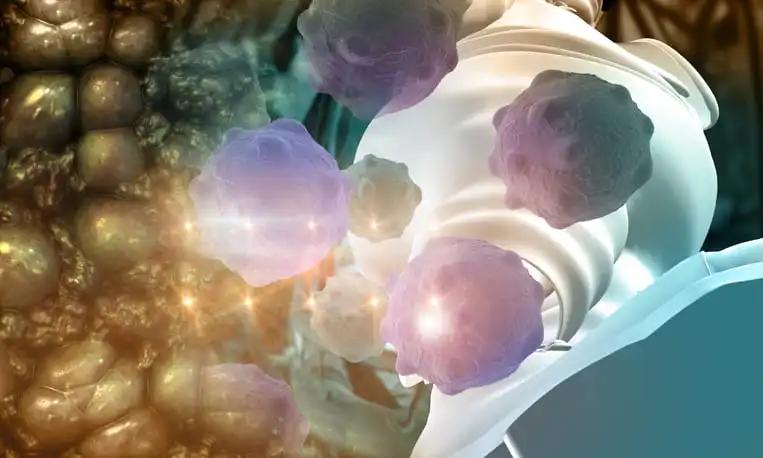KEY TAKEAWAYS
- The SPECTA trial aimed to investigate the correlation between mIF and gene expression data in the IMMUcan prospective neoadjuvant early-stage HER2+ BC patients.
- The study revealed correlations between mIF and RNAseq data highlighting the potential biological processes in HER2+ BC; ongoing analysis and validation are crucial.
IMMUcan (SPECTA NCT02834884) represents a continuous European initiative aiming to characterize the tumor microenvironment (TME) across various cancer types. Heterogeneous in nature, HER2-positive breast cancer (HER2+ BC) exhibits diverse TME characteristics that influence treatment responses.
Mattia Rediti and his team aimed to examine the correlation between multiplex immunofluorescence (mIF) and gene expression data within the prospective neoadjuvant early-stage HER2+ BC cohort of IMMUcan.
The study involved 149 patients, with mIF data obtained from pretreatment tumor biopsies (49 patients) using marker antibodies [cytokeratin, CD15, CD163, CD11c, CD20, CD3, PD1, PD-L1, Ki67, granzyme B (GB), CD8, CD4, CD56, FOXP3] to assess stroma and tumor regions. Paired RNA sequencing (RNAseq) data were available for 44 patients, and Spearman correlations (significant for P <0.05) were computed between mIF marker/cell phenotype densities (cells/mm2) and selected genes/gene expression signatures (GESs).
The results demonstrated that correlations between immune GESs and mIF markers ranged from 0.3 to 0.71. Notably, CD274 gene and PD-L1 mIF stromal density showed a high correlation (0.7). B cell stromal density correlated with a tertiary lymphoid structure GES (0.6). Proliferation-related GESs were correlated with Ki67+ tumor cell densities (0.57 to 0.66) and with PD-L1 and various cell types (e.g., PD1+/Ki67+ tumor cells, CD8+/GB+/PD-L1+ cells, CD163-expressing macrophages; range 0.3 to 0.58).
The PTEN loss GES positively correlated with PD-L1 densities in both tumor and stroma (0.66 to 0.67), while GESs related to glucose and lipid metabolism correlated (0.31 to 0.48) with CD163-expressing macrophages densities. Negative correlations were observed between stroma-related signatures and immune cell/marker densities (particularly CD8+ cells) and proliferative tumor cells (-0.3 to -0.62).
In the initial IMMUcan study analyses, correlations between mIF and RNAseq data revealed potential biological processes influencing distinct immune infiltration patterns in HER2+ BC. Ongoing additional analyses and further validation are crucial. Research is sponsored by the European Organisation for Research and Treatment of Cancer – EORTC.
Source: https://cslide.ctimeetingtech.com/immuno23hybrid/attendee/confcal/show/session/34
Clinical Trial: https://clinicaltrials.gov/study/NCT02834884
Rediti M, et al. (2023) ‘’ Integrating multiplex immunofluorescence with gene expression data in the IMMUcan HER2-positive breast cancer cohort.’’ Presented at ESMO I-O 2023 (179P).



